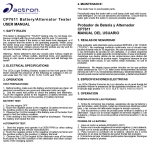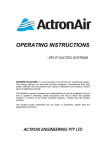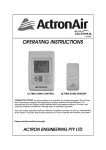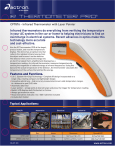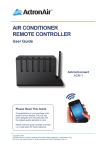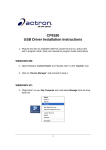Transcript
CP7611 Battery/Alternator Tester USER MANUAL 1. SAFTY RULES BATTERY TEST: This tester is designed for TOUCH testing only. Do not keep continuous contact with the circuit under test for over 10 seconds. Do not use the tester if the tester or test leads look damaged, or if you suspect that the tester is not operating properly. When using the tester, keep your fingers behind the finger guards on the tester and black test lead. Always ensure that the probes are dry and do not use the tester when your hands are wet. 1. Turn the engine OFF. 2. Touch the negative probe to the negative [-] battery terminal and the positive probe to the positive [+] battery terminal. 3. Observe the 3 LEDs located in the Battery area of the tester front panel to find the battery condition. 4. If the reading is low, the battery might be discharged. Recharge the battery and repeat the test. Warning: Never attempt to test any circuits were 120vac might be present, such as 120vac outlets, electrical tools, and appliances. Doing so can cause a serious personal injury and will damage the tester! ALTERNATOR TEST: 2. ELECTRICAL SPECIFICATIONS The LEDs (Light Emitting Diodes) located on the front panel of the tester indicate the presence of the following dc voltages in the circuit under test: 5V, 12V, 12.5V, 13.5V, 14.0V, and 15.0V 3. OPERATION TEST PREPARATIONS: 1. Before testing, make sure the battery and terminals are clean, all electrical connections are good and alternator belts are tight. 2. Use the same test points to check the battery and alternator. Touch the negative probe to the negative [-] battery terminal, and touch the positive probe to the positive [+] battery terminal. ACTRON 1. Start the engine and operate it at 2000 RPM (or other setting recommended by the vehicle manufacturer). 2. Touch the negative probe to the negative [-] battery terminal and the positive probe to the positive [+] battery terminal. 3. Observe the 3 LEDs located in the Alternator area of the tester front panel to find the condition of the alternator and other components of the charging system. 4. MAINTENANCE: This tester has no serviceable parts. Periodically wipe the tester with a soft damp cloth and mild household detergent. Do not use abrasives and solvents. Ensure that no water gets inside the tester to prevent possible damage. HAND TOOLS
